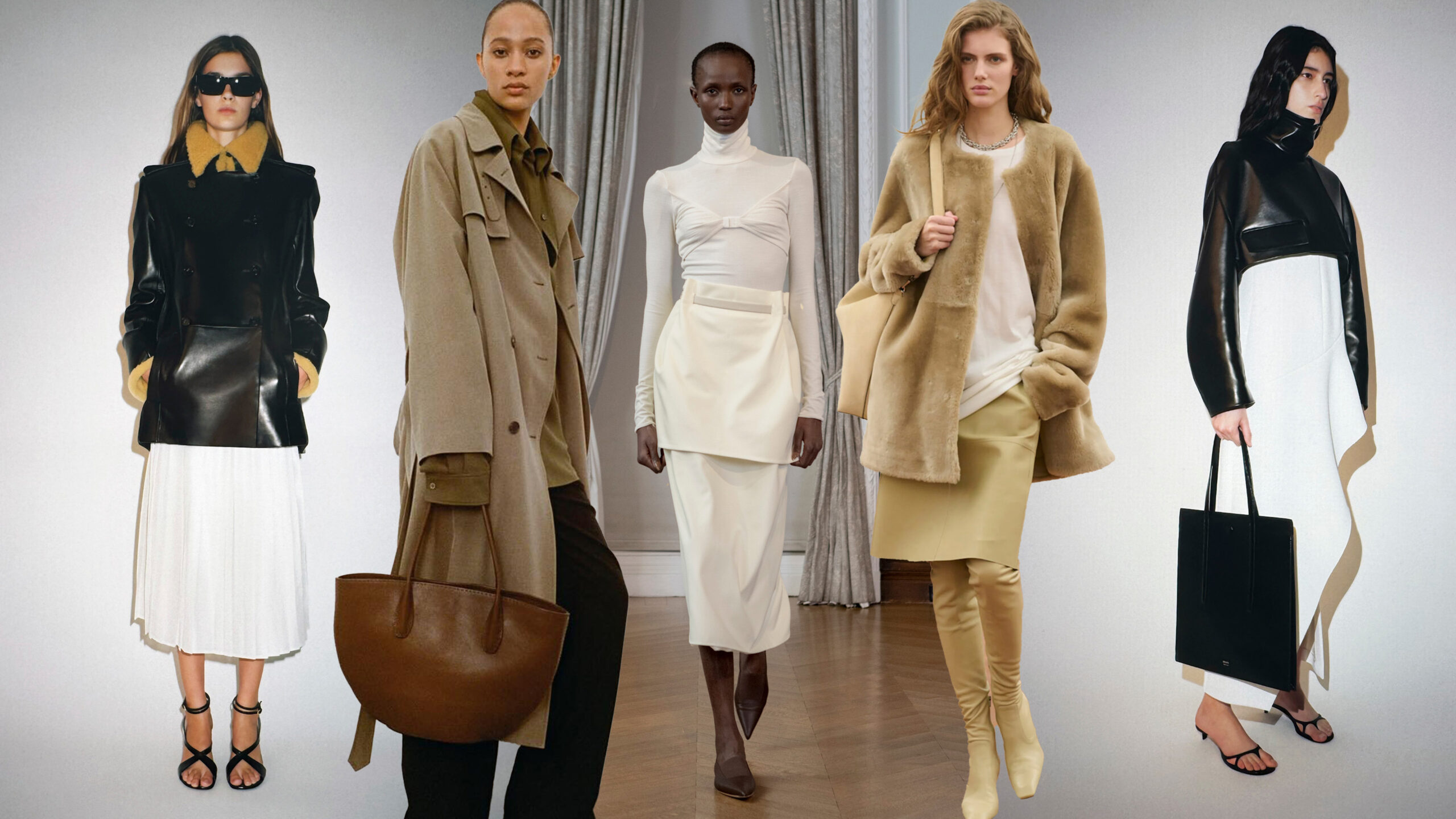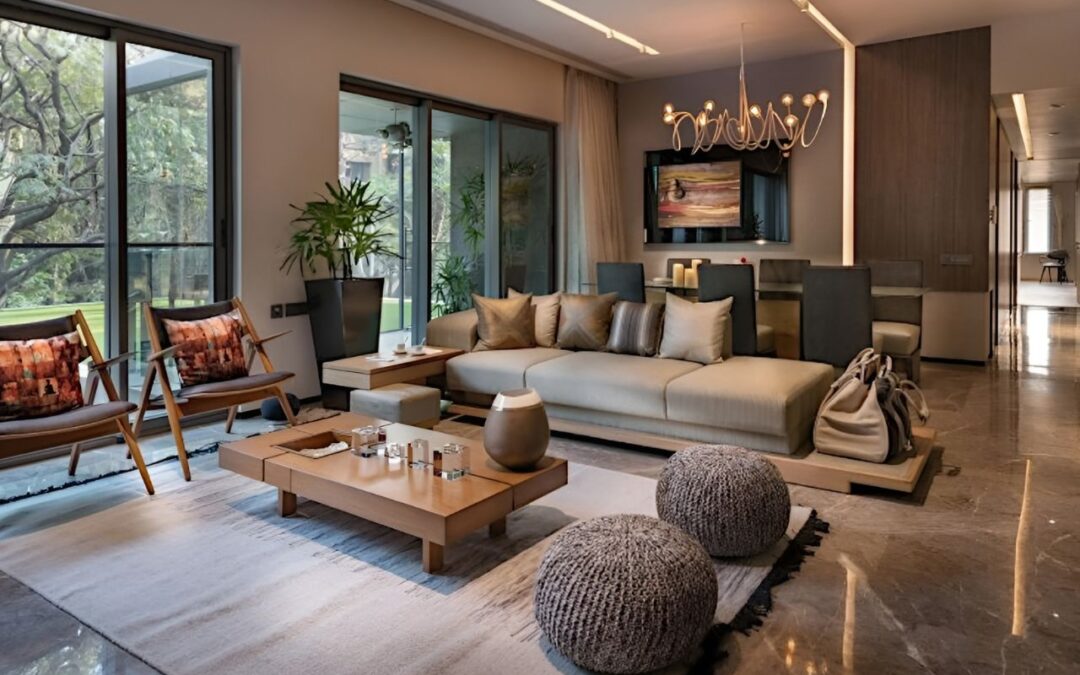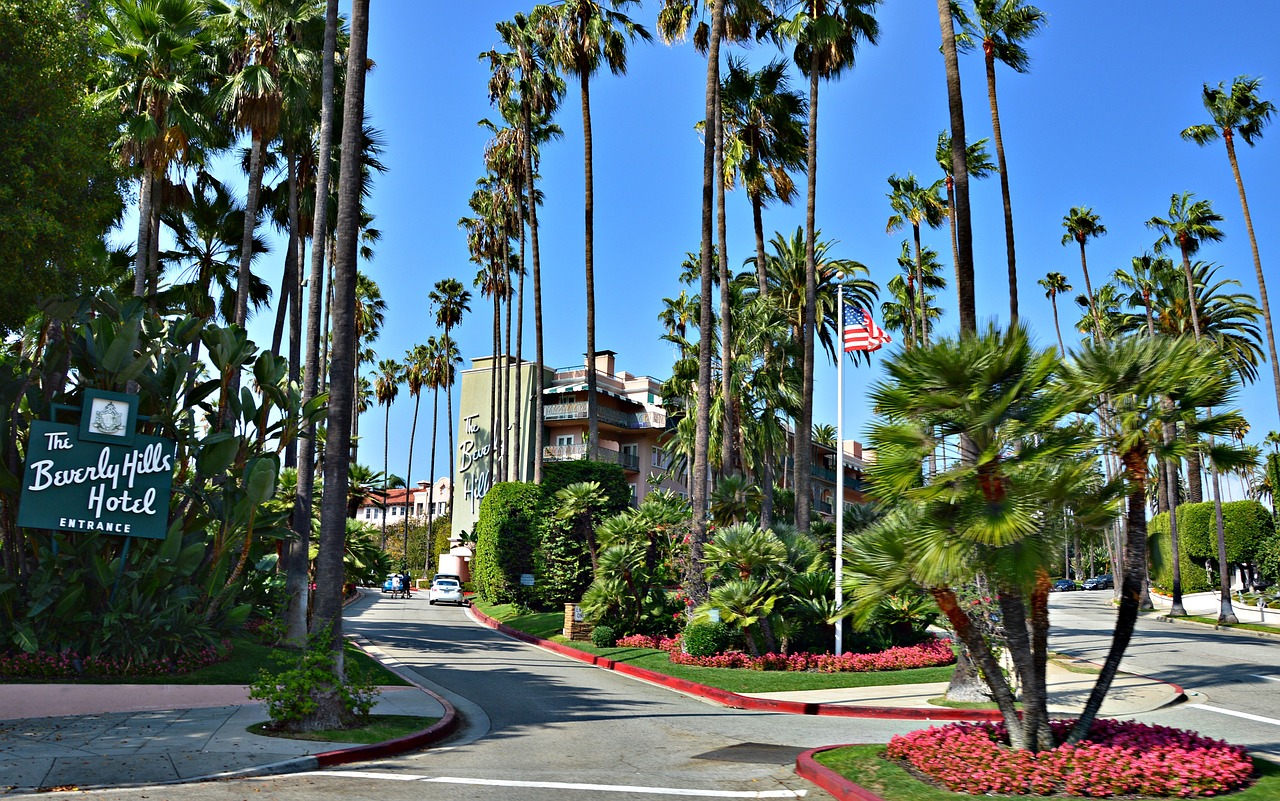For decades, the global lexicon of luxury was dominated by a single, deafening roar. It was the roar of European heritage brands, their logos emblazoned on everything from handbags to baseball caps, signaling status in a universal, instantly recognizable language. Luxury was external, a performance of wealth meant for an audience. It was loud, and for a time, America tried to play the same game.
But a profound and deliberate shift is underway. A new ethos, a counter-reformation of sorts, is redefining what it means to be a luxury brand in America. This is the era of Quiet Opulence.
Quiet Opulence is not merely minimalist design or a neutral color palette. It is a holistic philosophy centered on intrinsic value over extrinsic validation. It is luxury that whispers, compelling you to lean in closer to appreciate its depth. And at the very heart of this movement lies a renewed, almost radical, commitment to craftsmanship. This is not the inherited savoir-faire of a European atelier, often used as a marketing backdrop, but a living, breathing, and deeply personal pursuit of mastery by American artisans and the brands that champion them.
This 4000-word exploration delves into the cultural, economic, and psychological forces driving this shift, examines the brands leading the charge, and defines the very nature of the “radical craftsmanship” that makes this movement so compelling and enduring.
Part 1: The Pendulum Swings – From Loud Logos to Quiet Confidence
To understand the rise of quiet opulence, we must first examine the era it is reacting against.
The Age of Ostentation (1980s – Early 2000s)
The post-war economic boom, followed by the “Greed is Good” 80s and the dot-com frenzy of the 90s, created a new class of consumers for whom luxury was a trophy. Brands like Louis Vuitton, Gucci, and Chanel, with their iconic and heavily logoed monograms, became the uniform of the newly wealthy. This was luxury as social climbing, a shortcut to communicating one’s arrival. American brands, such as Ralph Lauren with its polo player and Coach with its signature “C” print, adeptly adapted this model, creating a vocabulary of status that was legible from across a room.
This model was incredibly effective because it was democratic. You didn’t need a refined eye to recognize the status symbol; you just needed to see the logo.
The Catalysts for Change
Several interconnected forces began to erode the foundations of logo-mania:
- The 2008 Financial Crisis: The Great Recession triggered a collective moral and aesthetic reckoning with overt displays of wealth. Flaunting a $5,000 bag in the midst of widespread economic hardship felt not just tone-deaf, but vulgar. A new sense of discretion and value-consciousness began to take root.
- Digital Saturation and “Stealth Wealth”: The rise of social media created a paradox. While it provided a global stage for peacocking, it also led to aesthetic fatigue. Seeing the same iconic bags on every influencer and celebrity diluted their exclusivity. Simultaneously, pop culture began to champion a more insidious form of status. Television shows like Succession and The White Lotus meticulously portray the ultra-wealthy not in head-to-toe logos, but in exquisitely tailored, anonymous garments. Their wealth is communicated through cut, fabric, and fit—a language only decipherable by those in the know. This is “stealth wealth,” a powerful subset of quiet opulence that signals membership to an exclusive tribe.
- The Rise of Conscious Consumerism: Millennials and Gen Z, the new powerhouses of consumer spending, began to ask harder questions. Who made this? What is it made from? What is this brand’s impact on the world? The environmental and ethical cost of mass-produced luxury—even from prestigious houses—became a significant concern. This generation values experiences and authenticity over hollow status, seeking products with a story and a soul.
- The American Identity Crisis: For years, American luxury struggled to compete with the centuries-old narratives of European maisons. How could a brand founded in 1990 compete with one founded in 1890? The answer emerged: don’t compete on their terms. Instead of manufacturing heritage, American brands began to champion a different set of values—innovation, individualism, rugged utility, and a distinctly modern, almost obsessive, pursuit of quality.
This perfect storm of cultural and economic shifts created a fertile ground for a new kind of luxury to flourish—one that is personal, principled, and profound.
Part 2: The Bedrock of Quiet Opulence – Deconstructing “Radical Craftsmanship”
At its core, Quiet Opulence is underwritten by what can only be described as Radical Craftsmanship. This term goes far beyond simple “quality.” It represents a fundamental reorientation of the relationship between the maker, the object, and the owner.
Radical Craftsmanship is characterized by several key pillars:
1. Material Integrity and Provenance
In the world of quiet opulence, the story begins not with a sketch, but with the raw material. Brands are investing an unprecedented level of attention into sourcing.
- Traceable Leathers: Instead of generic “Italian calfskin,” brands like Corter Leather or Tanner Goods often specify the tannery (e.g., Wickett & Craig in Pennsylvania or Horween in Chicago), the type of hide, and even the tanning process (vegetable-tanned vs. chrome-tanned). Vegetable-tanned leather, which ages and develops a unique patina over decades, is particularly prized for its narrative quality—it tells the story of its use.
- Deadstock and Rare Fabrics: Fashion brands such as Bode and Brunello Cucinelli (though Italian, his philosophy heavily influences American makers) utilize deadstock fabrics—leftover textiles from mills that are decades old. Each garment becomes a unique, limited-edition piece, imbued with a history that predates its creation. The scarcity is inherent, not manufactured.
- Domestic and Regenerative Sourcing: There is a growing pride in American raw materials. Brands like American Trench manufacture their socks and garments entirely in the US, from the spinning of the yarn to the final stitch. Others partner with farms practicing regenerative agriculture, creating a product that is not just sustainable, but actively beneficial to the ecosystem.
2. The Artisan as Protagonist
In radical craftsmanship, the hand of the maker is not hidden; it is celebrated. The slight imperfection in a stitch, the unique texture of a hand-woven fabric, the hammer marks on a piece of jewelry—these are not flaws but “maker’s marks,” the autograph of the artisan. This stands in stark contrast to the machine-perfect, sterile finish of mass luxury.
Brands are building their entire identity around their makers. You can often find their names, their stories, and even their portraits on the brand’s website. This human connection transforms the purchase from a transaction into a patronage of the arts. When you buy a bag from Frank Clegg Leatherworks, you are not just buying a bag; you are buying a piece of Frank Clegg’s five-decade-long dedication to his craft in Fall River, Massachusetts.
3. Time as the Ultimate Luxury
In a world of overnight shipping and fast fashion, radical craftsmanship consciously and defiantly embraces slowness. A jacket from The Armoury (though based in Hong Kong, they champion global artisans) might take six weeks to be made by a single tailor. A pair of rawhide laces from J.W. Hulme is braided by hand. A knife from Benchmade involves hundreds of precise, hands-on operations.
This temporal investment does two things. First, it guarantees a level of quality control and attention to detail that is impossible in a factory line. Second, it imbues the object with a tangible sense of value that the buyer can feel. You know that this item did not appear magically; it was willed into existence through skill, patience, and focus. The time it took to create becomes part of its story and its worth.
4. Heirloom Quality and Emotional Durability
Quiet opulence is inherently anti-disposable. The goal is not to create a product for a season, but for a lifetime—or even generations. This is “emotional durability.” The design is often timeless, avoiding fleeting trends. The construction is over-engineered for resilience, using techniques like saddle stitching (which, unlike machine locking stitches, can be easily repaired if one stitch breaks).
This philosophy fosters a deep, long-term relationship between the owner and the object. As the item ages, it molds to the user, acquiring scuffs, scratches, and a patina that records a personal history. A waxed canvas bag from Frost River in Duluth, Minnesota, doesn’t look worse with age; it looks better. It becomes yours in a way a pristine, logoed bag never could. It is an heirloom in the making.
Part 3: Case Studies in American Quiet Opulence
The theory of quiet opulence is best understood through the brands that embody it.
1. Shinola: The Rebirth of American Manufacturing
Founded in Detroit in 2011, Shinola’s mission was audacious: to create a luxury brand rooted in the rebirth of American manufacturing. While their watches are powered by Swiss movements, their assembly, along with the production of their leather goods and journals, happens in Detroit. Shinola’s opulence is quiet because it’s not about the watch’s complications (they are relatively simple), but about its story. It’s a story of jobs, of civic pride, and of a city’s resilience. The luxury is in the purpose. They have faced criticism regarding their “Built in Detroit” marketing, but their commitment to domestic assembly and job creation has made them a pivotal case study in modern American brand-building.
2. RRL: The Archive of American Workwear
Ralph Lauren’s double-RL line is the quintessential example of stealth wealth and radical craftsmanship. It is not for the casual observer. RRL is a deeply researched, meticulously crafted homage to America’s sartorial past—from 19th-century military uniforms to 1930s ranch wear. The opulence is in the details: the custom-developed fabrics that mimic vintage looms, the historically accurate hardware, the intentional fading and repair that is done by hand. To wear RRL is to signal a connoisseur’s knowledge of American style history. It is perhaps the most complete and expensive love letter to workwear ever written.
3. OAK NYC: The Alchemy of Fabric and Form
OAK (Acronym for Our Amazing Journey) is a New York-based brand that epitomizes the material-driven approach. Founders Louis Terline and Andres Izquieta are fabric obsessives. They travel the world to source exceptional textiles—Japanese selvedge denim, Scottish tweeds, Swiss cotton jersey. Their designs are often simple, almost architectural, serving as a canvas to let the extraordinary materials speak. The luxury of an OAK garment is felt most profoundly by the wearer—the weight of the denim, the softness of the knit, the way it drapes and ages over time. It is a deeply personal and tactile luxury.
4. GoS Watches: The Nordic-American Fusion of Steel and Stone
A collaboration between American master blade-smith John Gustafson and Swedish watchmaker Patrik Sjögren, GoS (Gustafson and Sjögren) Watches represents the pinnacle of artisanal collaboration. Gustafson hand-forges Damascus steel for the watch dials, creating mesmerizing, unique patterns reminiscent of flowing water or northern lights. These are often inlaid with pieces of Swedish fossilized stone or Viking-age iron. The result is a wearable piece of art and geological history. Each watch is a one-of-a-kind testament to two masters of their respective crafts, blending ancient techniques with modern horology. It is quiet opulence at its most profound and personal.
Read more: Tipping, Taxes, and Transit: The Unwritten Rules Every Visitor to the USA Should Know
Part 4: The Connoisseur’s Gaze – The Psychology of the Quiet Luxury Consumer
Who is buying into this philosophy? The consumer of quiet opulence is not a passive recipient of marketing but an active participant, a “connoisseur.”
- The Informed Investor: This buyer does their research. They know the difference between a Goodyear welt and a cement sole, between full-grain and top-grain leather, between a Swiss ETA movement and a Selita. The purchase is an investment, both financial and emotional, in an object that is understood on a technical level.
- The Seeker of Authenticity: This consumer is deeply skeptical of mass marketing and craves authenticity. They are drawn to the transparency of the supply chain, the visibility of the makers, and the brand’s commitment to its stated values. They are not just buying a product; they are buying into a belief system.
- The Confident Individual: Ultimately, quiet opulence is for the self-assured. It requires no external validation. The satisfaction is intrinsic, derived from the personal appreciation of quality, design, and story. It is a luxury that is felt more than it is seen, a secret pleasure that the wearer shares only with those perceptive enough to understand it.
Part 5: The Future of American Luxury – Sustaining the Craft
The move towards quiet opulence and radical craftsmanship is not a fleeting trend; it is a long-term correction in the market. However, its future is not without challenges.
- Scalability vs. Integrity: How can a brand grow without diluting the very artisanal qualities that define it? The answer may lie in a “slow growth” model, focusing on deepening the product line and customer experience rather than rapid global expansion.
- Education and Accessibility: These products are expensive, reflecting the true cost of quality materials and skilled labor. A key challenge is consumer education—justifying the price by clearly communicating the value of the craftsmanship, durability, and ethics behind it.
- The Next Generation of Makers: Sustaining this movement requires nurturing new talent. Initiatives like scholarships, apprenticeships, and partnerships with trade schools are crucial to ensuring these skills do not disappear.
The future of American luxury looks less like a corporate conglomerate and more like a guild of dedicated artisans and visionary brands. It is a future where value is measured in years of service, not likes on a feed; where status is conveyed through knowledge and discernment, not through the size of a logo; and where the greatest luxury of all is the quiet confidence that comes from owning something truly, authentically, and radically well-made.
Read more: Navigating the States: A First-Timer’s Guide to Transportation in the USA
Frequently Asked Questions (FAQ)
Q1: Is “Quiet Opulence” just another name for minimalism?
Not exactly. While minimalism is an aesthetic focused on simplicity and the reduction of elements, quiet opulence is a philosophy of value. A minimalist item might be simple and inexpensive. A quiet opulence item can be visually complex (like a Damascus steel watch dial or an intricately patterned tweed jacket) but its value is intrinsic and understated, not broadcasted through logos. It’s about the substance, not just the style.
Q2: Isn’t this just “Stealth Wealth”?
Stealth Wealth is a powerful subset of Quiet Opulence. It specifically refers to the practice of the ultra-wealthy wearing extremely expensive but anonymous clothing to avoid scrutiny and signal exclusively to their own class. Quiet Opulence is a broader movement that includes stealth wealth but also encompasses the values of conscious consumerism, artisan support, and heirloom creation, which can be motivations for people across different wealth brackets.
Q3: How can I tell if a brand truly embodies “radical craftsmanship” or if it’s just marketing?
Look for transparency. Truly craft-driven brands are proud to show their work. Scrutinize their “About Us” and “Craftsmanship” sections. Do they name their artisans? Do they detail their sourcing (e.g., “We use leather from Horween Tannery”)? Do they explain their construction techniques (e.g., “saddle-stitched,” “Goodyear-welted”)? Vague language like “the finest materials” or “exquisite craftsmanship” without specifics is often a red flag. Also, look for brands that offer repair services, as this signals a commitment to longevity.
Q4: This all sounds very expensive. Is quiet opulence only for the wealthy?
The initial investment is certainly higher than for fast fashion or even some entry-level luxury brands. However, the cost-per-wear over a lifetime often makes these items more economical. A $600 jacket that lasts 30 years is cheaper per year than a $150 jacket that lasts two. Furthermore, you can engage with the philosophy at different levels. It could mean saving up for one perfect bag instead of buying three trendy ones, or it could mean learning to mend and care for the quality items you already own to extend their life.
Q5: Are there any European or Asian brands that also fit this description?
Absolutely. While this article focuses on the American context, the philosophy is global. Japan is a powerhouse of quiet opulence, with brands like Visvim and Kapital offering incredible textile innovation and artisan techniques. In Europe, brands like Loro Piana (Italy) and Brunello Cucinelli (Italy) are masters of understated luxury through material excellence, though they operate at a much larger scale. The difference is that in America, this movement is often tied to a narrative of modern creation and a redefinition of national identity, rather than the stewardship of an ancient heritage.
Q6: What’s the first step to building a “quiet opulence” wardrobe?
Start slowly and mindfully. Don’t rush to replace everything. Begin with one category you care deeply about, whether it’s footwear, outerwear, or a bag. Research brands, read reviews, and learn about the materials and construction. Focus on timeless, versatile pieces that you will wear for years. The goal is not to build a wardrobe overnight, but to curate a collection of loved and lasting items, one intentional purchase at a time.




